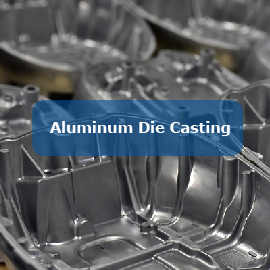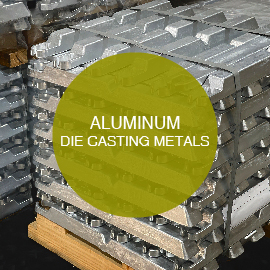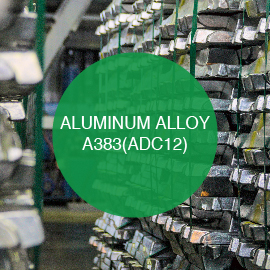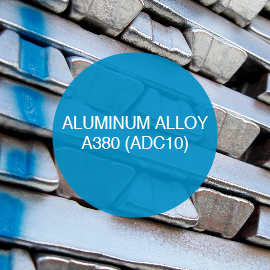ALUMINUM ALLOY A413
The pressure-tightness features of A413 aluminum alloy are amazing. For this reason, it is an excellent material for use in hydraulic cylinders. Because it can be cast, it is an excellent option for die-casting components that require a high level of detail.
A413 Characteristics
Silicon (Si), Aluminum (Al), and Magnesium (Mg) are the major metallic components of the A413 alloy, however, it overall contains other metals too. This alloy has an electrical resistance of 0.00000440 ohm-cm and is considered to be a conductive material. In addition to this, the price is lower than that of the Aluminum A360 alloy. Because of its superior mechanical and thermal qualities, die casting is the production method that works best for fabricating components out of this alloy.
Advantages
The following are the advantages of the A413:
- Because of its superior pressure tightness, it is suitable for use in settings that subject the component to very high pressure.
- The strength of this alloy is exceptional; more specifically, it can sustain significant pressure without breaking or bending apart into parts.
- Due to the very low amount of iron in this alloy, it has the ideal corrosion resistance level.
- In addition to exhibiting a high ratio of strength despite its relatively low weight, A413 also has a very low specific gravity.
Applications
The below list shows several applications of Aluminum A413:
- The aerospace industry utilizes the A413 for manufacturing materials that are resistant to corrosion and lightweight.
- The marine industry makes use of the A413, a highly essential metal alloy, to make various products.
- This alloy is used in the construction of the majority of the bicycles and motorbikes currently available on the market.
- A413 is used in a variety of vehicles in the automobile sector.
- Because of its amazing corrosion resistivity and extreme tensile strength, the A413 is great for the manufacturing of air and gas cylinders.
Mechanical Properties
| Contents | Value |
| Brinell Hardness | 80 HB |
| Ultimate Tensile Strength | 290 MPa |
| Yield Strength | 130 MPa |
| Shear Strength | 170 MPa |
| Fatigue Strength | 130 MPa |
| Elongation | 3.5 % in 50 mm |
| Modulus of Elasticity | 71.0 GPa |
| Machinability | 30 % |
| Poisson’s Ratio | 0.33 |
| Shear Modulus | 26.7 GPa |
Physical Properties
| Contents | Value |
| Electrical Conductivity | 31.0 % IACS |
| Thermal Conductivity | 121 W/mK |
| Melting Point (average) | 578 ℃ |
| Coefficient of Thermal Expansion | 21.6 µm/m°K |
| Capacity of Specific Heat | 963 J/Kg.K |
| Density | 2.66 g/cm³ |
Alloy Composition
| Contents | Value |
| Aluminum (Al) | 83.35-85.35 % |
| Silicon (Si) | 11-13 % |
| Magnesium (Mg) | 0.1 % |
| Tin (Sn) | 0.15 % |
| Copper (Cu) | 1 % |
| Manganese (Mn) | 0.35 % |
| Nickel (Ni) | 0.5 % |
| Iron (Fe) | 1.3 % |
| Other-Metallic | 0.25 % |
Limitations of Using Aluminum Alloy 413
Here are the limitations of this alloy:
- You will need to pay a higher price for this alloy when compared to the price of other kinds of aluminum alloys, such as A383.
- You should also be aware the amount of purity in this alloy isn’t as high as it is in certain other aluminum alloys, which may result in adverse effects.






